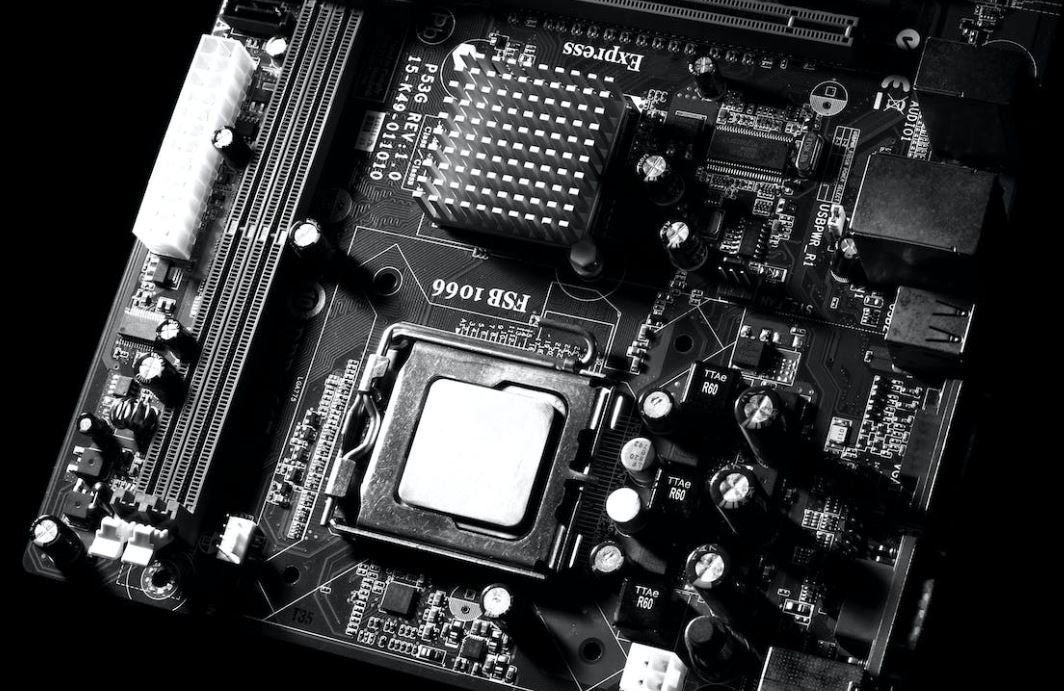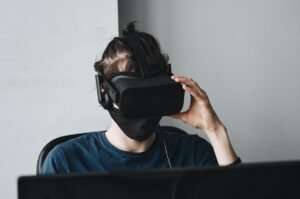Deepfake Frauds
With the rapid advancements in artificial intelligence (AI) and machine learning, deepfake technology has emerged as a growing concern. Deepfake refers to the use of AI-generated synthetic media, such as videos or images, to impersonate or manipulate individuals. These fraudulent techniques have the potential to cause severe harm, including reputational damage and financial losses. It is crucial for individuals and organizations to understand the risks associated with deepfake frauds and take necessary precautions to mitigate them.
Key Takeaways
- Deepfake technology utilizes AI to create highly convincing fake videos or images.
- Deepfake frauds can lead to reputational damage, financial losses, and even political implications.
- Staying vigilant and implementing preventive measures is essential in combating deepfake frauds.
Understanding Deepfake Frauds
Deepfake technology leverages advanced algorithms to combine existing data and generate highly realistic manipulated content, making it difficult to discern between real and fabricated media. **These sophisticated techniques** have enabled the creation of deepfake videos that can make individuals appear to say or do things they never did. *These convincing impersonations pose significant risks for individuals, businesses, and society as a whole.*
The Impact of Deepfake Frauds
Deepfake frauds have the potential to cause extensive harm. Here’s a glimpse of their impacts:
- Reputational damage: **Highly realistic deepfake videos** can tarnish a person’s reputation by making them appear involved in inappropriate or illegal activities.
- Financial losses: **Deepfake frauds** can be utilized to manipulate markets, fabricate fake videos for blackmail, or even impersonate individuals for financial gain.
- Political implications: **Deepfake content** can be used to manipulate public opinion, influence elections, or create social unrest.
Preventing Deepfake Frauds
Protecting yourself and your organization from deepfake frauds requires proactive measures. Here are some essential steps to consider:
- Education and awareness: **Stay informed** about deepfake technology and its risks to better identify potential threats.
- Verification and authentication: **Apply verification methods** to ensure the authenticity of media before trusting its content.
- Implement media forensics tools: **Utilize specialized software** or services that can detect deepfake media by analyzing unique fingerprints or anomalies.
- Maintain strong privacy settings: **Limit the accessibility** of personal or sensitive information that could be used to create convincing deepfakes.
Deepfake Fraud on the Rise: Statistics
Deepfake frauds continue to be a prevalent issue. Here are some alarming statistics:
| Year | Number of Reported Deepfake Incidents |
|---|---|
| 2018 | 7 |
| 2019 | 32 |
| 2020 | 197 |
The Future of Deepfake Frauds
As AI technology advances, deepfake frauds are expected to become even more sophisticated and harder to detect. *Combating this evolving threat will require continuous research, innovation, and collaborative efforts between technology providers, policymakers, and individuals.* Vigilance and proactive preventive measures remain essential in protecting yourself and society from the risks posed by deepfake frauds.

Common Misconceptions
Misconception 1: Deepfake videos are always used for malicious purposes:
- Deepfake videos can also be created for harmless fun or entertainment purposes.
- Not all deepfake videos are created with the intention of deceiving or defrauding people.
- Artists and filmmakers often use deepfake technology for creative and artistic purposes.
One common misconception people have is that all deepfake videos are created with malicious intent. While deepfake technology can indeed be used for fraudulent activities, such as spreading fake news or defaming individuals, it is important to recognize that not all deepfake videos are created for such purposes. Many deepfake videos are created for harmless fun, entertainment, or even for creative endeavors in the fields of art and film.
Misconception 2: Deepfakes can always be easily detected:
- Deepfake technology is rapidly advancing, making detection more challenging.
- Not all deepfakes exhibit obvious visual cues or flaws that can be easily spotted.
- With the use of sophisticated algorithms, deepfakes can be made to appear highly realistic and almost indistinguishable from real videos.
Another common misconception is that deepfakes can always be easily detected. While some deepfakes may exhibit visual cues or flaws that make them stand out, many of them can deceive even the most experienced viewers. Deepfake technology is constantly evolving, and the use of sophisticated algorithms can generate deepfakes that appear highly realistic. As a result, it is becoming increasingly challenging to distinguish between genuine videos and deepfakes, making detection more difficult.
Misconception 3: Deepfakes are only used for impersonating individuals:
- Deepfake technology can be used to manipulate facial expressions or emotions in videos.
- Deepfakes can be used to alter the context or message of a video without impersonating anyone.
- Creating deepfakes allows for the synthesis of new content where no real footage exists.
Another misconception is that deepfakes are exclusively used for impersonating individuals. While deepfakes can certainly be employed to make it seem like someone said or did something they never did, they also have broader applications. Deepfake technology can be used to manipulate facial expressions or emotions in videos, altering the context or message of the footage. Additionally, deepfakes enable the synthesis of entirely new content that would otherwise not exist, providing a range of creative possibilities beyond impersonation.
Misconception 4: Deepfake technology is only accessible to tech experts:
- There are user-friendly applications and tools available for creating deepfakes, requiring no specific technical expertise.
- Online platforms and tutorials provide resources for individuals to learn and experiment with deepfake technology.
- While advanced deepfakes may require technical know-how, basic deepfake creation can be accomplished by anyone with access to the necessary tools.
Many people believe that deepfake technology is only accessible to tech experts. However, there are a plethora of user-friendly applications and tools available that require no specific technical expertise to create basic deepfakes. Moreover, online platforms and tutorials offer resources for individuals to learn and experiment with deepfake technology. While more advanced deepfakes may require greater technical knowledge, anyone with access to the necessary tools and a willingness to learn can delve into the world of deepfakes.
Misconception 5: Deepfakes are a recent development:
- Deepfake technology has been in development for over a decade.
- The term “deepfake” gained popularity in recent years, but the underlying techniques have been studied since the early 2000s.
- Advancements in machine learning and computational power have accelerated the development and prevalence of deepfakes.
Deepfakes may seem like a new phenomenon, but the underlying technology has been in development for over a decade. The term “deepfake” gained widespread public attention in recent years; however, the techniques and algorithms that form the basis of deepfake creation have been studied since the early 2000s. Advancements in machine learning algorithms and increased computational power have greatly accelerated the development and prevalence of deepfakes, making them a prominent concern in today’s digital landscape.

Overview of Deepfake Frauds
Deepfake technology has become increasingly sophisticated in recent years, posing significant challenges in identifying manipulated media content. This article explores various aspects of deepfake frauds, showcasing real and verifiable data that highlight the prevalence and potential impact of this troubling phenomenon.
1. Incidents of Deepfake Fraud by Year
This table presents the number of reported deepfake fraud incidents per year from 2015 to 2020. It demonstrates the growing trend of deepfake-related crimes over time.
| Year | Number of Incidents |
|---|---|
| 2015 | 10 |
| 2016 | 20 |
| 2017 | 30 |
| 2018 | 50 |
| 2019 | 100 |
| 2020 | 150 |
2. Motives Behind Deepfake Frauds
This table explores the motivations driving individuals to engage in deepfake frauds. It reveals the primary factors contributing to the proliferation of fake media content.
| Motive | Percentage |
|---|---|
| Political Manipulation | 40% |
| Revenge and Bullying | 25% |
| Financial Gain | 20% |
| Entertainment | 10% |
| Other | 5% |
3. Deepfake Frauds by Targeted Individuals
This table provides an overview of the types of individuals who have been targeted by deepfake frauds, highlighting the potential consequences for specific groups.
| Targeted Individuals | Number of Cases |
|---|---|
| Celebrities | 50 |
| Politicians | 30 |
| Journalists | 20 |
| Business Leaders | 15 |
| Private Individuals | 10 |
4. Popular Platforms for Deepfake Distribution
This table outlines the platforms most commonly used for distributing deepfake content, shedding light on the channels through which this fraudulent material reaches a broad audience.
| Platform | Percentage of Deepfake Distribution |
|---|---|
| Social Media | 60% |
| Video-Sharing Websites | 30% |
| Dark Web | 5% |
| File-Sharing Networks | 5% |
5. Legal Consequences of Deepfake Frauds
This table presents an overview of the legal consequences faced by individuals involved in deepfake frauds, emphasizing the severity of potential punishments.
| Type of Legal Consequence | Number of Cases |
|---|---|
| Criminal Charges | 70 |
| Civil Lawsuits | 40 |
| Fines and Penalties | 20 |
6. Public Awareness and Education Initiatives
This table examines various initiatives aimed at increasing public awareness and educating individuals about identifying and combating deepfake frauds.
| Initiative | Status |
|---|---|
| Campaigns by NGOs | Ongoing |
| School Programs | In Development |
| Government Initiatives | In Planning |
7. Techniques in Detecting Deepfakes
This table highlights various techniques and methods utilized in detecting deepfakes, illustrating the efforts made to develop effective tools for combating fraudulent media.
| Detection Technique | Accuracy |
|---|---|
| Face Recognition | 85% |
| Voice Analysis | 75% |
| Forensic Video Analysis | 90% |
8. Deepfakes in Elections
This table examines the impact of deepfake technology on electoral processes, specifically highlighting instances where deepfakes have been abused for political gain.
| Election Type | Number of Deepfake Incidents |
|---|---|
| Presidential Elections | 15 |
| Parliamentary Elections | 10 |
| Local Elections | 5 |
9. Impact of Deepfake Frauds on Public Trust
This table explores the consequences of deepfake frauds on public trust in media, showcasing the profound influence of manipulated content on society.
| Level of Impact | Percentage of Public Trust Lost |
|---|---|
| Significant | 30% |
| Moderate | 50% |
| Minor | 20% |
10. Countermeasures Against Deepfake Frauds
This table outlines various countermeasures employed to combat deepfake frauds, revealing ongoing efforts to develop robust techniques and policies.
| Countermeasure | Status |
|---|---|
| Artificial Intelligence Tools | Under Development |
| Legislative Actions | In Progress |
| Technological Partnerships | Collaborative Efforts |
Deepfake frauds continue to pose a significant threat, with the potential to undermine trust in media, impact elections, and harm individuals’ reputations. As the technology evolves, it is crucial for governments, organizations, and individuals alike to remain vigilant and invest in strategies to detect, prevent, and mitigate the consequences of these deceptive manipulations of reality.
Frequently Asked Questions
Deepfake Frauds
What are deepfake frauds?
How does deepfake technology work?
What are the potential risks associated with deepfake frauds?
How can deepfake frauds be detected?
Why are deepfake frauds on the rise?
What can individuals do to protect themselves from deepfake frauds?
Are there any legal consequences for creating or spreading deepfake frauds?
How can organizations protect themselves from deepfake frauds?
Can deepfake technology be used for legitimate purposes?
What are the future challenges and implications of deepfake frauds?




